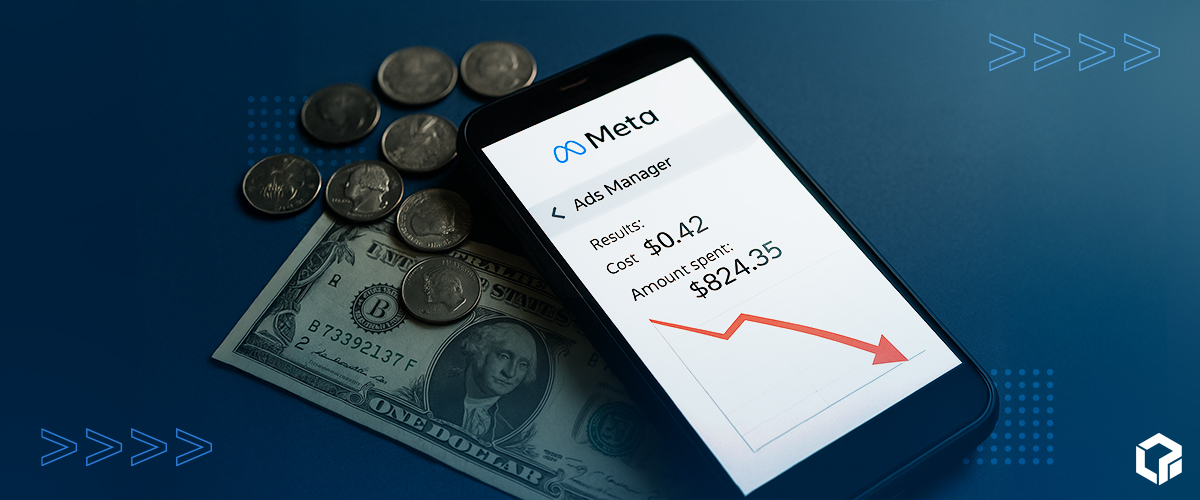In Meta advertising, one factor consistently outperforms all others: Creative Velocity, the speed and volume at which you produce, test, and launch new ad creatives. Brands that master this approach achieve 30-50% ROAS improvements and up to 8% higher conversion rates.
Users scroll through the digital equivalent of a football field (303 feet) of content every day. To win their attention, your creative strategy has to move faster than they scroll.
It may sound like another marketing buzzword, but unlike most, it’s backed by data. It’s also the approach top-performing brands use to consistently outpace competitors, reduce customer acquisition costs, and scale profitably on Meta’s platforms.
What Is Creative Velocity?
Creative Velocity is defined as “the number of net-new creatives launched per unit of time.” Brands that produce and test new creative assets more frequently outperform competitors, not just incrementally, but exponentially.
But here’s what most marketers miss: it’s not just about volume. Creative Velocity is the primary driver of creative value, and creative value is the single most impactful lever you have on Meta. It’s not just about how much creative you produce; it’s about how quickly you test, how accurately you measure, and how effectively you scale what works.
Think of it as your creative production engine. It needs to run faster than your competitors to stay ahead in the attention economy.
The Science Behind Creative Fatigue
To understand why Creative Velocity matters, we need to examine Meta’s own research on creative fatigue and how costly it can be:

The Numbers Don’t Lie
The average user sees the same creative 4.2 times across all Meta ad impressions, with over 19% of impressions shown more than five times to the same user. Even more striking: at four repeated exposures, the likelihood of conversion drops by about 45%.
This isn’t speculation. It’s based on Meta’s analysis of millions of ad impressions. Users repeatedly seeing the same creative experience declining conversion rates, while cost per action increases.
The Fatal Misconception About “Wear-In”
Many marketers believe creatives need time to “warm up” before they perform. Meta’s research debunks this entirely. With direct response objectives, there’s no evidence of a warm-up effect. In fact, clicks and conversions become more expensive with repeated exposures.
In short: Your best-performing creative begins declining from the moment it’s repeatedly shown.
The Performance Impact: Real Numbers
When Meta tested their Creative Velocity hypothesis, the results were clear:
- Reducing fatigue improved conversion rates by 8% (on average in high-fatigue cases).
- Dynamic creative optimization boosted ROAS by 30-50%.
- Personalized creative delivered 2-3x higher engagement.
These aren’t marginal gains either. They’re compounding advantages that separate high-growth brands from the pack.
The Creative Velocity Framework: Key Metrics
To implement Creative Velocity successfully, you need to track the right metrics:

- Creative Velocity Rate
The number of net-new creatives launched per unit of time. Top performers launch multiple new creatives weekly, not monthly. - Time to Fatigue
How long a creative performs before hitting diminishing returns. Top-of-funnel ads typically fatigue faster (3-4 weeks) than bottom-of-funnel ads (6-7 weeks). - First-Time Impression Ratio
A Meta metric that shows the percentage of daily impressions coming from people seeing your ad for the first time. A declining ratio signals that fatigue is approaching.

Strategic Implementation: The 70-20-10 Rule
Spend 70% of your budget on proven performers, 20% testing new angles and channels, and 10% on experimental ideas that may fail but could surprise you. Stop trying to fix tired creative. Focus on producing new winners instead.
This approach ensures a steady stream of fresh content while maintaining stable performance from proven ads.
Platform-Specific Timing
Creative fatigue doesn’t happen uniformly across platforms:
- TikTok: Fatigue can set in after just a few days.
- Meta: Creatives may last weeks or months if the algorithm favors them.
- Pinterest: Fatigue typically appears after 2–4 weeks, especially when the same creative is shown repeatedly to a consistent audience without refreshes.
Rule of thumb: Refresh creatives every two weeks (though this varies by audience size and budget).
Creative Diversification: Beyond More Content
Meta’s push toward Creative Diversification is quickly becoming a requirement to stay competitive. It’s about giving Meta’s algorithm a variety of assets to match the right message with the right audience at the right time.

This means creating variations across:
- Visual styles: Photography vs. illustration vs. UGC (user-generated content)
- Message angles: Problem-focused vs. solution-focused vs. social proof
- Formats: Single image vs. carousel vs. video
- Audience contexts: Mobile vs. desktop, feed vs. stories
The Automation Advantage
Smart brands leverage technology to scale Creative Velocity.
For example: Upload 10 images/videos, 5 titles, 5 text variations, 5 descriptions, and 5 CTAs. Meta’s dynamic creative feature then mixes these assets into multiple ad variants, testing them across audience segments.
This approach can generate hundreds of unique combinations from a relatively small set of assets.
Warning Signs: When Creative Velocity Stalls
Immediate Indicators
- Declining click through rate (CTR): One of the earliest signs of fatigue.
- Rising cost per 1K impressions (CPMs): As resonance declines, CPMs increase.
- Increasing cost per acquisition (CPA): Higher costs to hit the same goals indicate declining impact.
Advanced Indicators
- Frequency Creep: Performance declines as ad frequency rises.
- Impression Decline: If users stop engaging, impressions shrink, signaling it’s time for fresh creative.
The Competitive Reality
The biggest challenge in performance marketing is aligning consumer demand for personalized ads with a team’s ability to deliver at scale. Consumers expect personalized, relevant content, but traditional workflows rarely keep up.
Without enough creative volume, budgets get wasted on fatigued ads. But volume alone isn’t enough. Brands also need creative variety, tailored to the audience and product.
Getting Started: Your Creative Velocity Action Plan

✔️ Audit Your Current State: How many new creatives do you launch weekly? What’s your average time to fatigue?
✔️ Establish Baseline Metrics: Track velocity rate, time to fatigue, and first-time impression ratio.
✔️ Implement the 70-20-10 Framework: Allocate budget across proven, testing, and experimental creatives.
✔️ Monitor Actively: Use automated alerts to detect fatigue early.
✔️ Diversify Your Portfolio: Test across different formats, angles, and styles.
The Bottom Line
In 2025’s hyper-competitive Meta landscape, Creative Velocity isn’t optional. It’s essential. Brands leveraging it to “target the right user, with the right creative, at the right time” are achieving:
- Higher CTRs
- Lower CAC
- Greater lifetime value
The brands that master Creative Velocity will win. While those that don’t will struggle with rising costs, declining performance, and ultimately, fall behind.
The question isn’t whether you should implement Creative Velocity. It’s how quickly you can start.
Ready to accelerate your Creative Velocity? Reach out for a free in-depth audit today.





